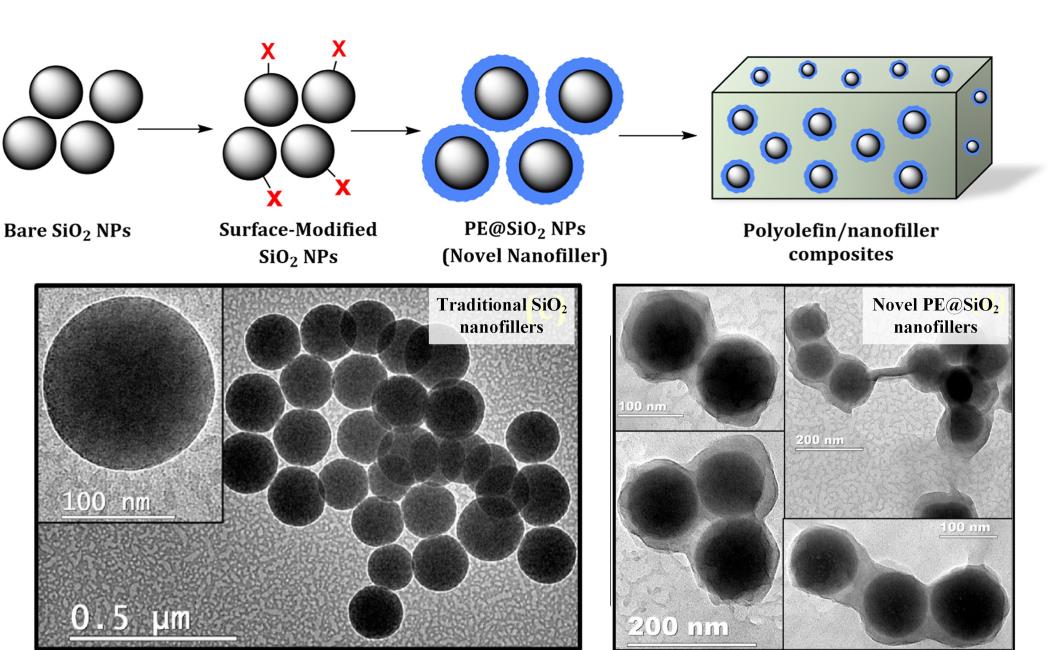


17 June, 2022
Silica nanoparticles (SiO2 NPs) were prepared and functionalized with polyethylene (PE@SiO2 NPs) using the surface-initiated polyhomologation (SI-polyhomologation) technique. Polyolefin nanocomposites were fabricated later by melt mixing of different ratios of the as-prepared SiO2 NPs and PE@SiO2 NPs with linear low-density polyethylene (LLDPE) and low-density polyethylene (LDPE) matrices. Firstly, SiO2 NPs were modified with different alkoxysilane ligands, dichloro(divinyl)silane (DCDVS), allyl trimethoxysilane (ATMS), and vinyl triethoxylsilane (VTES). Subsequently, thexylborane, an initiator for SI-polyhomologation, was immobilized to the modified surface of SiO2 NPs through hydroboration reactions. Polyhomologation was then allowed to proceed by adding monomer solution to form polyethylene brushes covalently bonded to the surface of the NPs. Physiochemical characterizations had confirmed the morphology, chemical structure, and thermal stability for each step of modification reactions. LLDPE and LDPE nanocomposites were prepared by extrusion with SiO2 NPs and PE@SiO2 NPs as nanofillers. Finally, tensile tests and morphological SEM-based analyses are presented to discuss the influence of the grafted PE on both the dispersion of the fillers and the mechanical properties of the filler/matrix interphase.